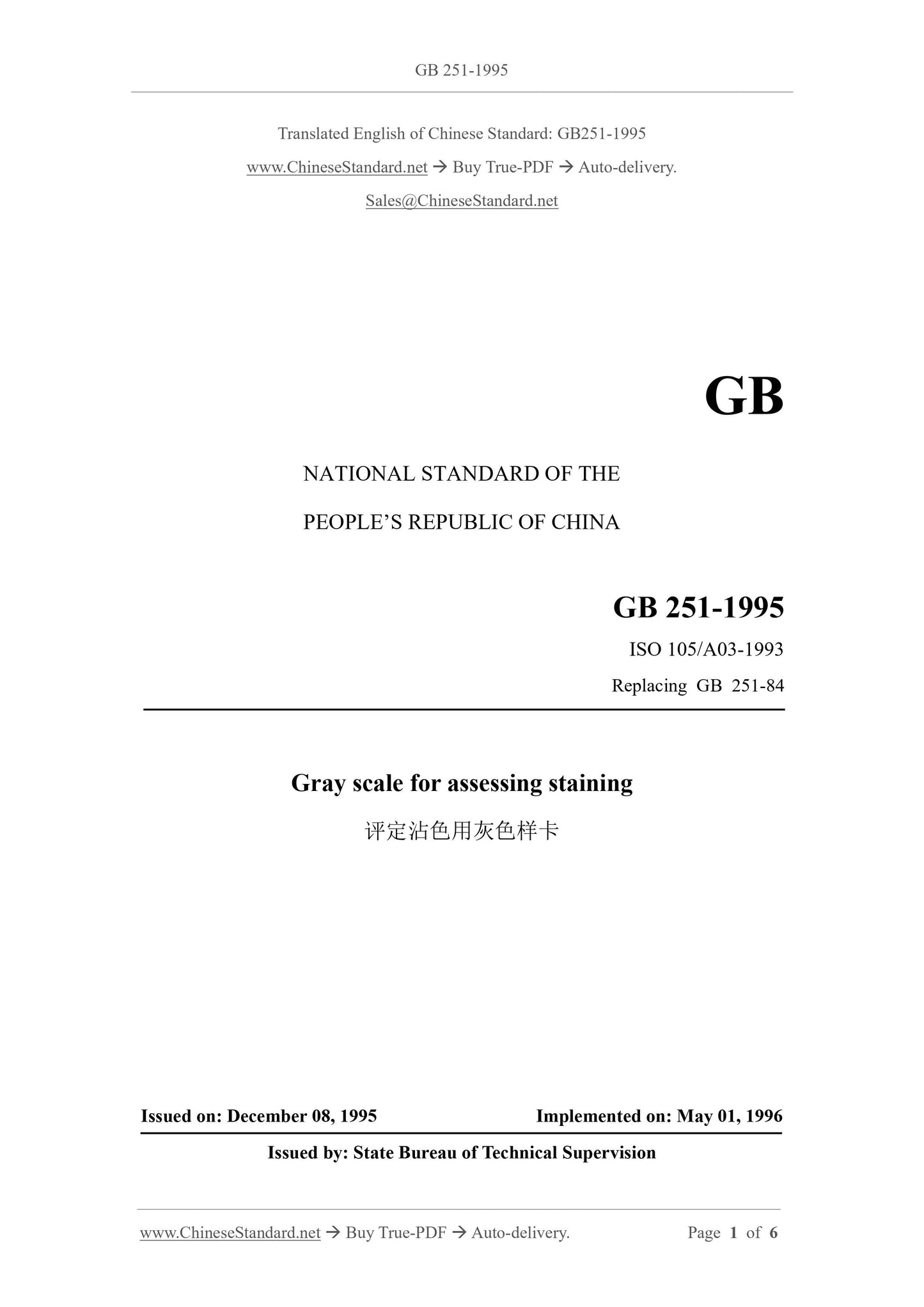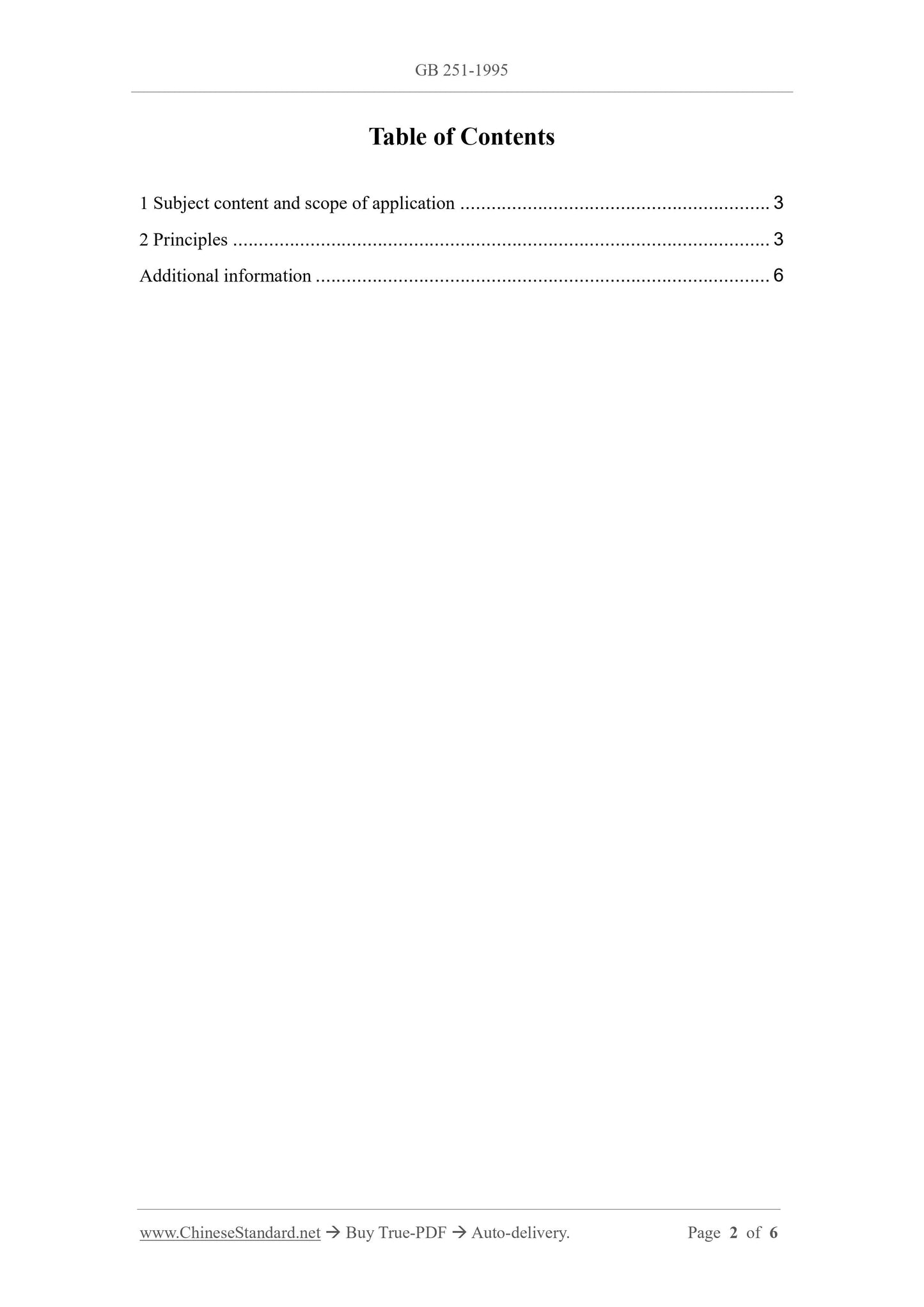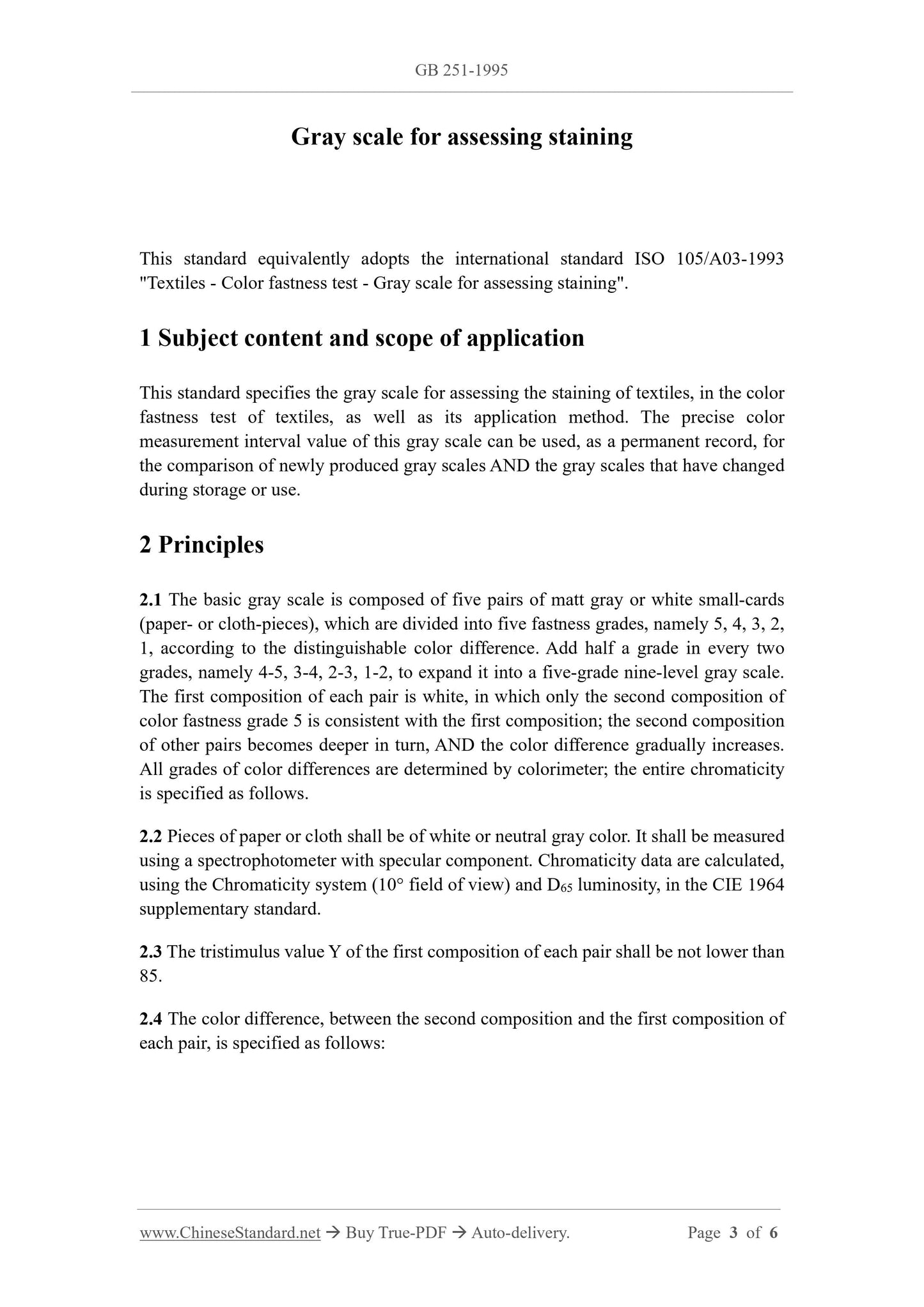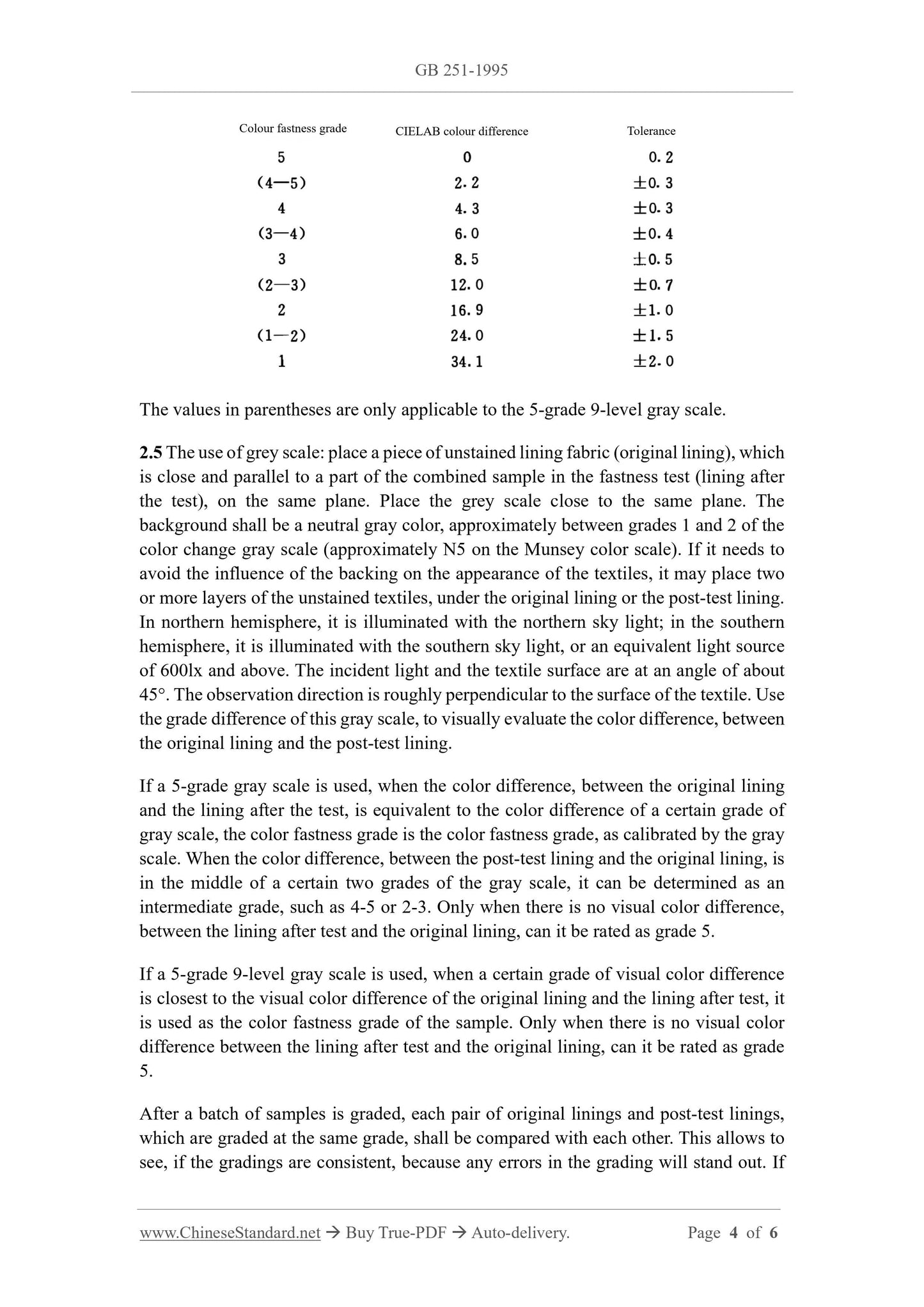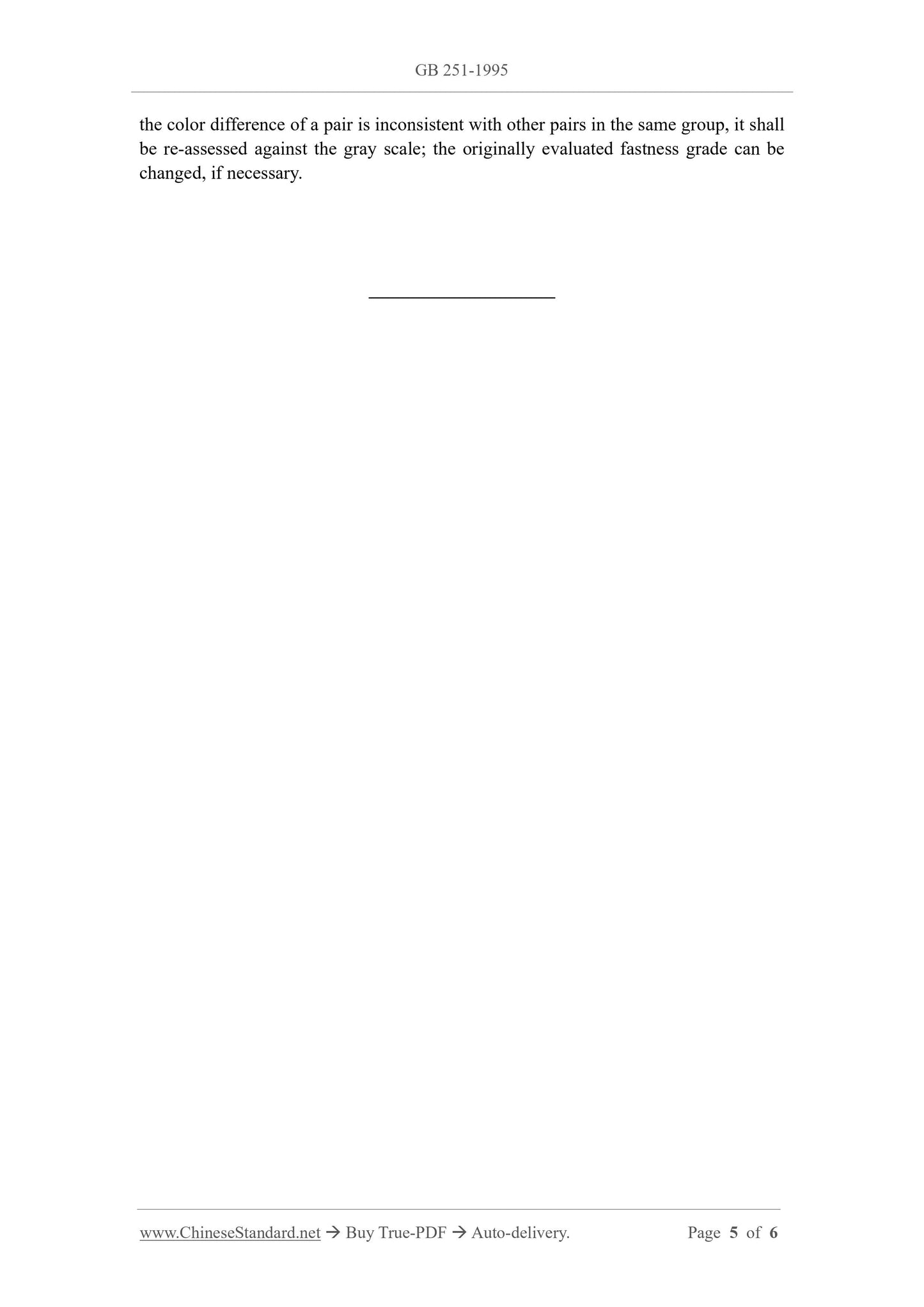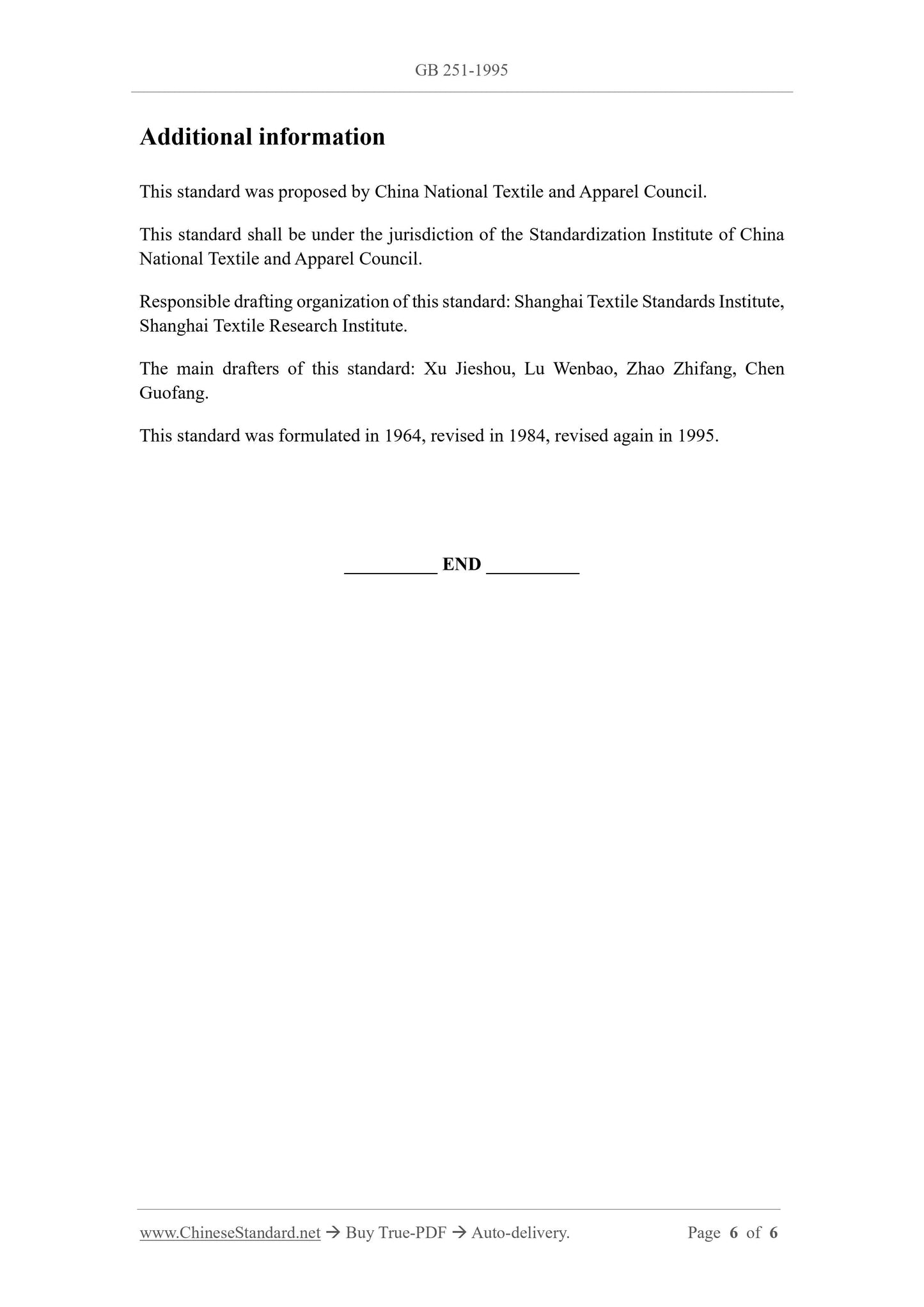1
/
of
6
PayPal, credit cards. Download editable-PDF & invoice in 1 second!
GB 251-1995 English PDF
GB 251-1995 English PDF
Regular price
$190.00
Regular price
Sale price
$190.00
Unit price
/
per
Shipping calculated at checkout.
Couldn't load pickup availability
GB 251-1995: Gray scale for assessing staining
Delivery: 9 seconds. Download (and Email) true-PDF + Invoice.Get Quotation: Click GB 251-1995 (Self-service in 1-minute)
Newer / historical versions: GB 251-1995
Preview True-PDF
Scope
This standard specifies the gray scale for assessing the staining of textiles, in the colorfastness test of textiles, as well as its application method. The precise color
measurement interval value of this gray scale can be used, as a permanent record, for
the comparison of newly produced gray scales AND the gray scales that have changed
during storage or use.
Basic Data
| Standard ID | GB 251-1995 (GB251-1995) |
| Description (Translated English) | Gray scale for assessing staining |
| Sector / Industry | National Standard |
| Classification of Chinese Standard | W04 |
| Classification of International Standard | 17.02 |
| Word Count Estimation | 2,256 |
| Date of Issue | 12/8/1995 |
| Date of Implementation | 5/1/1996 |
| Older Standard (superseded by this standard) | GB 251-1984 |
| Adopted Standard | ISO 105-A03-1993, IDT |
| Regulation (derived from) | Announcement of Newly Approved National Standards No. 2008 (No. 125 overall) 12 |
| Issuing agency(ies) | State Bureau of Technical Supervision |
| Summary | This Standard equivalently adopts international standard ISO 105/A03-1993 "Textiles - Tests for color fastness - Grey scale for assessing staining card. " |
Share
